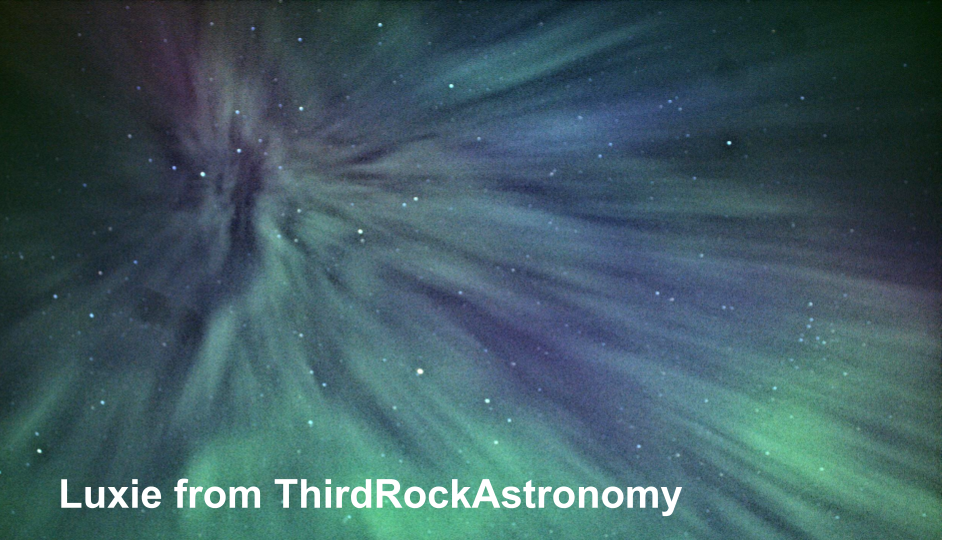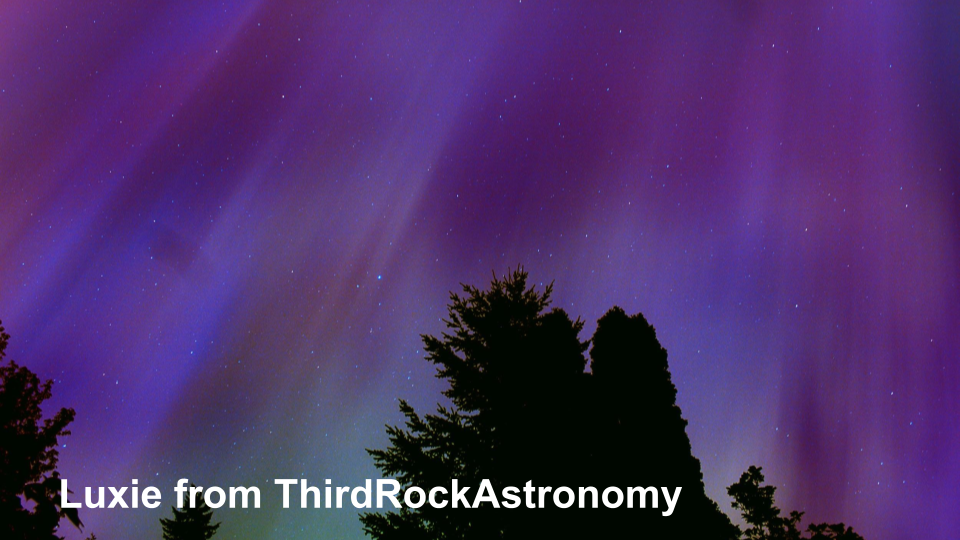
On Wednesday, May 8, community member ThirdRock Astronomy brought to my attention a massive sunspot that was growing to resemble the Sunspot that produced the 1859 Carrington Event, which lit the skies with aurora and powered the telegraph grid with induced current.
As someone who lives in the mid latitudes, I don’t generally follow the Sun’s activity; aurorae just don’t reach this far south unless something wild occurs.
It turns out that particular spot needed my attention because it was gearing up to, well, go wild.
The Sunspot in question is cataloged as 3664. It first appears as a small smudge on the edge of the Sun in SDO’s images on May 1.
ver the next week the Sunspot would grow in size and we’d begin to see X-class flares, the kind of flares that can cause radio black outs, aurora, and other effects when their energy hits earth.
Note – this sun spot is not the only current source of X-Class flares. It was just the visibly biggest source.
Solar flare strengths are measured from there X-Ray flux here at Earth. Currently, this is being done by GOES 16-18.
On May 6, a powerful X-Ray flare was launched straight at us. This was followed by additional X-class flares on May 9-11.
While light takes only about 8 minutes to reach us from the sun, particles can take anywhere from 15 hours to nearly 6 days to reach us; it all depends the energy of the Coronal Mass Ejection that is firing them our way.
The SOHO mission was strategically placed in an orbit between the Earth and the Sun that keeps it balanced forever at the Earth Sun Lagrange 1 point. This location allow it to first see the CME and then detected it’s particles hours or days later and provide us with an early warning about when exactly we can expect particles to reach Earth.
And on Friday, May 10, news went out that the earlier CME’s were going to light up our sky.
And did they ever.
From in mid to high latitudes in both hemispheres, aurora in colors I’ve frankly never seen before started to be seen. It turns out that high end iPhones are remarkably good at photographing aurora and this allowed more people to record aurora than ever before.
On the Aurorasourus.org website, people reported seeing aurora as far south as the Yucatan in Mexico and the Canary Islands off the coast of Spain. In the other hemisphere, confirmed reports came from as far north as Melbourne and the Northern tip of New Zealand.
And with only a few hours warning, everyone, including me, started scrambling to find a equipment and a dark enough place to observe the sky.
Sadly, the location I found came equipped with a tree determined to block the most interesting part of the sky, but it turns out Illinois doesn’t have a lot of public places that are open after dark without reservations.

But… you folks found they didn’t have to travel to see the show. Community member Sully2cats, located about an hour south of me, was able to see Aurora from his yard in a large town of 41k people.

Because the auroras swept across the sky, we found that when we looked North, we could see the high altitude red light from low density Oxygen getting excited by the solar particles. Turning around to face south, we saw the greens of lower altitude and higher density oxygen as well as the pinks of nitrogen. And there were visibly also moving bright streaks our eyes and cameras perceived as white because they were so much brighter.

And this is one of those times when having this information living in my head had no bearing on my experience. The beauty and awe triggering grandeur of what was happening simply made me and the friends I was with giddy like little kids.
Since the May 10 aurora, I have become addicted to data coming from the Sun, and to trying to figure out if, like the 1859 event, that had to be a once in a lifetime kind of event. Let’s face it, the Sun is going to do whatever it wants, and our ability to predict its behavior is a work in progress.

What I have learned is this – Sun spots can last for hours or -rarely -weeks. With the Sun’s 25 day rotation period at its equator, we just might be in a position to see Sunspot 3664 rotate back into view. If we don’t see it in 2 weeks… it’s gone. But that doesn’t mean the Sun won’t produce other magnificent flares.
While finallizing this story for recording on May 15, I learned that as Sunspot 3664 sets in the Sun’s west, something new is triggering lighting up the Eastern edge of the Sun. Some … thing… still not visible over the Sun’s horizon is erupting out a new X-class flare. It could be another Sunspot complex is on the way that will soon rotate into view.
I for one am hopeful that we just might…. Might… get more mid latitude aurora coming our way. It’s on my bucket list to spend a night in a dark site with my camera and an aurora filled sky. I now know where there is a campground that takes walk ons, and my camping gear is now ready to go at a moments notice.
Come on Sun. I’m rooting for you. Send us a sign… or at least a CME pointed right at as.
